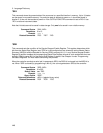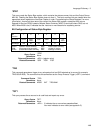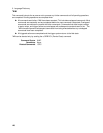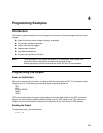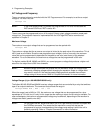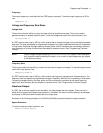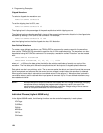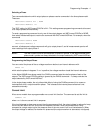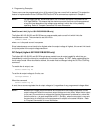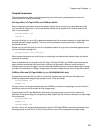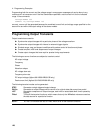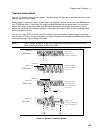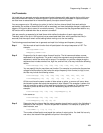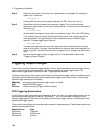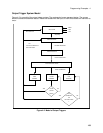
4 - Programming Examples
126
The ac source can be programmed to turn off its output if the rms current limit is reached. This protection
feature is implemented with the CURRent:PROTection:STATe command as explained in Chapter 3.
NOTE: On the Agilent 6814B, 6834B and 6843A, the CURRent command is coupled with the
VOLTage:RANGe. This means that the maximum current limit that can be programmed
at a given time depends on the voltage range setting in which the unit is presently
operating. Refer to "Coupled Commands" for more information.
Peak Current Limit (Agilent 6811B/6812B/6813B only)
The Agilent 6811B, 6812B, and 6813B have a programmable peak current limit which limits the
instantaneous current. The command to set this limit is:
CURRent:PEAK <n>
where <n> is the peak current in amperes.
Since instantaneous current tends to be highest when the output voltage is highest, this current limit tends
to clip the peaks of the output voltage waveform.
DC Output (Agilent 6811B/6812B/6813B only)
The Agilent 6811B, 6812B, and 6813B single-phase models have dc output capability which lets you
independently control the dc and ac components of the output voltage. At *RST, these models default to
the ac output mode. When dc offset is desired, this mode must be changed using the OUTPut:COUPling
command.
To enable the dc output, use:
OUTPut:COUPling DC
To set the dc output voltage to 5 volts, use:
VOLTage:OFFSet 5
When the command
OUTPut:COUPling AC
is sent, the ac source regulates the dc output voltage to 0, regardless of any programmed voltage offset.
NOTE: Because the voltage offset commands are coupled with the voltage commands, the dc
output voltage will affect the maximum output voltage and vice-versa. When the dc output
is non-zero, the maximum ac voltage that can be programmed is reduced to a value that
limits the total ac + dc peak amplitude to 425 V. Similarly, when the ac output is non-zero
the maximum dc offset that can be programmed is subject to the same limitation. Refer
to "Coupled Commands" for more information.



